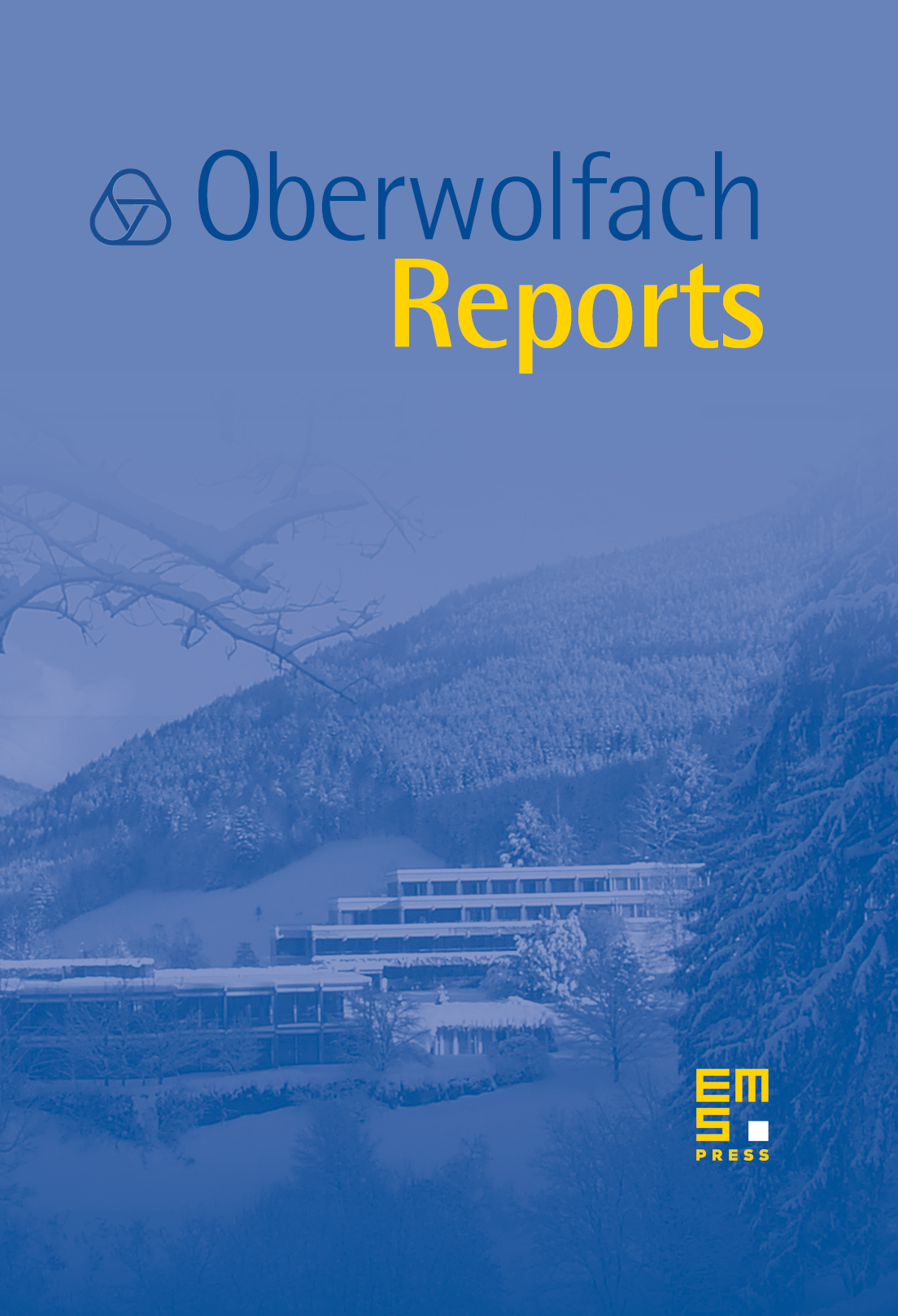Classical Algebraic Geometry
David Eisenbud
Mathematical Sciences Research Institute, Berkeley, USAJoseph Harris
Harvard University, Cambridge, USAFrank-Olaf Schreyer
Universität des Saarlandes, Saarbrücken, Germany

Abstract
The worshop on Classical Algebraic Geometry, organized by David Eisenbud (Berkeley), Joe Harris (Harvard) and Frank-Olaf Schreyer (Saarbrücken) was well attended by important senior researchers and many gifted young mathematicians.
Classical Algebraic Geometry is characterized by having very basic and concrete problems. However development of the abstract, sophisticated tools of algebraic geometry has often lead to remarkable progress on these problems. It was our intention to make a conference emphasizing progress on the classical problems, and featuring the new tools and their applications. We emphasize a few results:
Geometry of the Moduli Spaces of Curves. Based partly on motivations from mathematical physics, the enumerative geometry of the moduli spaces of curves has been an extremely active area for some time. Several of the major conjectures in the area have seen major progress, and may be close to resolution. The extension of Brill–Noether theory for line bundles to the case of bundles of higher rank is a long-standing problem (Mukai's conjecture), and this plays now a novel role in the search for interesting divisors on the moduli space in the work of Gavril Farkas. In the talk of Brendon Hassett we learned how other birational models of the Moduli space can be interpreted in terms of curves with nodes, cusps and tacnodes.
Derived Categories. Originally introduced in the late fifties as a tool for generalizing duality theory, derived categories have arisen in a several striking new contexts, including the characterization of birational transformations in the minimal model program, the analysis of the Bernstein–Gel'fand–Gel'fand and Fourier–Mukai transforms. One of the speakers of the conference (Mihnea Popa) suggested an amazing series of parallels between Castelnuovo theory and the Schottky problem, based on these last two contexts.
Enumerative Geometry. The high-tech tools of modern geometry have led to a better understanding of degenerations, which has in turn led to the solution of many classical enumerative problems. We heard talks on a solution via specialization of the long-standing problem of intersection theory on flag manifolds, and on the maximal degneration of complex structures through amoebas and tropical geometry.
We were particularly pleased by the number of extremely strong young (i.e. untenured) participants, among them for example Gavril Farkas and Mihnea Popa.
Cite this article
David Eisenbud, Joseph Harris, Frank-Olaf Schreyer, Classical Algebraic Geometry. Oberwolfach Rep. 1 (2004), no. 3, pp. 1657–1702
DOI 10.4171/OWR/2004/31